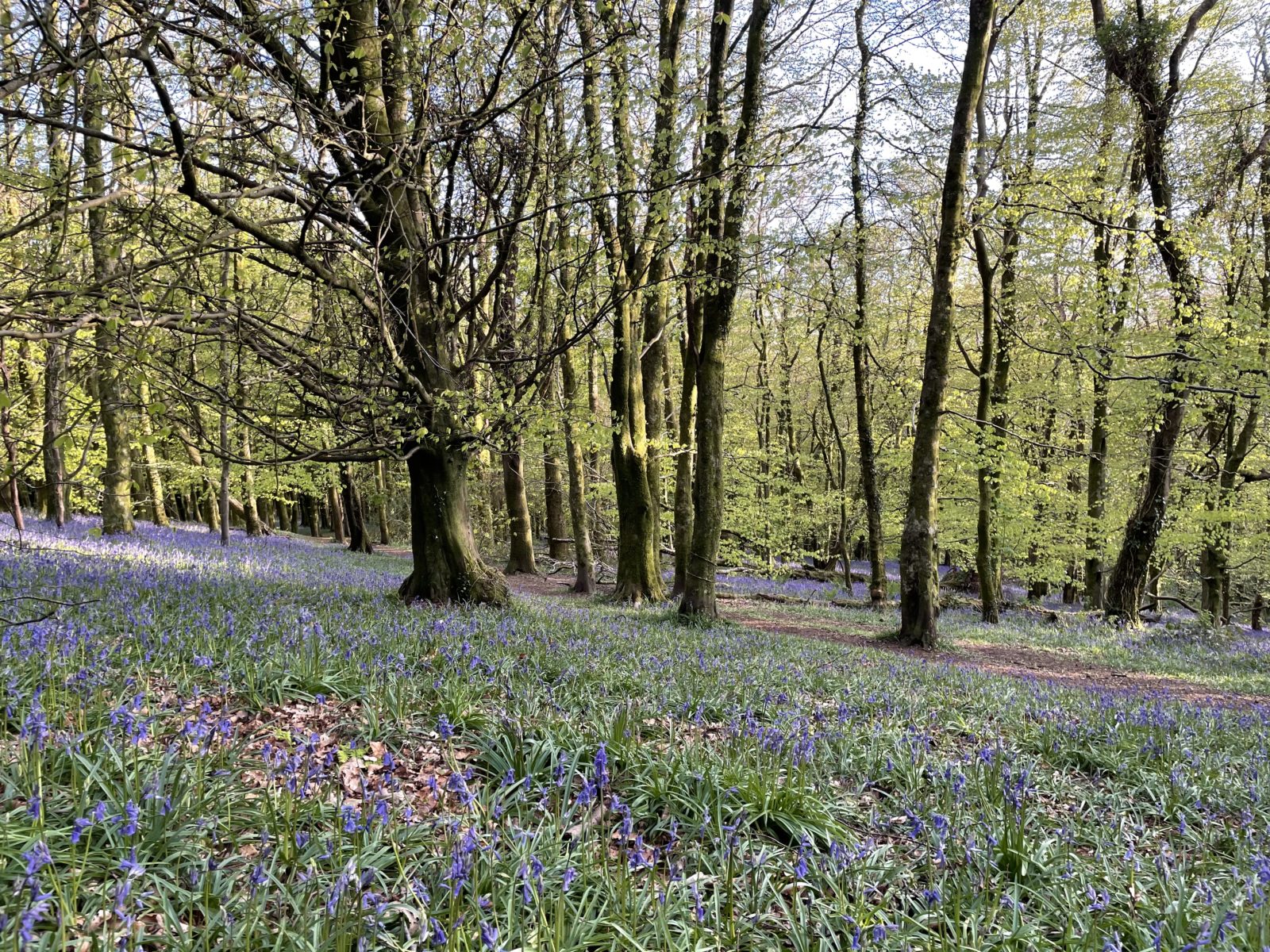The sight of bluebells carpeting a woodland floor can be breathtaking – but the popular spring outing is in danger of becoming increasingly rare, Coed Cadw (the Woodland Trust in Wales) has warned.
Wales’ largest woodland conservation charity cares for 100 sites in Wales, with a total area of 2,897 hectares (7,155 acres), making it one of the most important organisations for Welsh native bluebell colonies.
Bluebells usually bloom in April and May, but the sensitive plants can take at least five years to establish and colonise. This means that trampling by people and dogs can cause serious damage in seconds.
Coed Cadw Director Natalie Buttriss said that Wales’ native bluebells are vital both ecologically and culturally. She explained:
“The spectacular spring-time sight of a bluebell-carpeted woodland is something everyone should have the chance to enjoy, and the early blooms provide an important source of pollen and nectar for emerging insects. Because large colonies can take so long to establish, they are often found in ancient woodlands.
“Sadly, in Wales, ancient woodland is rare; it covers only 4.5% of the land surface – so the places which remain are extremely precious. It is vital for us to safeguard these areas and protect them, so that future generations can enjoy these important plants for years to come.”
When damaged, bluebell bulbs cannot produce enough energy to flower and reproduce in subsequent years. Meanwhile, areas of high footfall can eventually cause entire colonies of these rare and delicate flowers to die out.
Coed Cadw estate manager Kylie Jones Mattock said: “It can be very tempting to stray from the path for that perfect photo, or to get away from the crowds. But those first few footsteps soon turn into man-made paths, with lots of people doing the same thing. We have seen it happen on multiple sites, resulting in the loss of what adds up to be acres of blooms.
“Because of this, we are appealing for visitors to our bluebell woods to enjoy the natural splendour while protecting the flowers – by sticking to proper paths and keeping dogs on leads.”
Such simple conservation tips are part of the Love Your Woods campaign which is encouraging people to protect woods and nature for the future. Visitors can play their part by following some simple guidelines, including taking dog mess and litter home, and protecting wildlife by keeping dogs close.
Here are some of the best bluebell woods Coed Cadw has to offer in Wales:
- Graig Fawr, Margam: This wood boasts six sites of archaeological interest including a World War II station and a 14th century monk’s bath house. Kestrel, buzzard, sparrowhawk, little and tawny owls have all been reported here. There are dramatic views from the upper footpath and a spectacular bluebell display in spring.
- Green Castle Woods, Llangain near Carmarthen: Green Castle Woods is made up of three woods: two ancient oak woods and a more recently planted woodland. This mix – of ancient and newly created woodland, botanically rich meadows and hedgerows – is a haven for wildlife.
- Cwm George & Casehill Woods, Dinas Powys; Made up of four woodlands – Cwm George Wood, Casehill Wood, Pen-y-Turnpike Wood and Casehill Meadows, this mix of planted ancient semi-natural woodland and more recent native planting is home to a variety of flora and fauna.
- Plas Power Woods, Bersham near Wrexham: One of our most popular Welsh sites, Plas Power Woods is a haven for botanists, wildlife lovers and history buffs alike. We are slowly removing conifers from this ancient woodland site, allowing the light to return to the woodland floor and the native species to come back.
- Gaer Fawr Wood, Guilsfield: Gaer Fawr occupies a hill just north of Guilsfield (Cegidfa) near Welshpool with a network of paths that lead up to an Iron Age fort at the summit. Predominantly an oak woodland, it boasts an excellent display of bluebells in spring, with views across the surrounding landscape.








Leave a Reply
View Comments